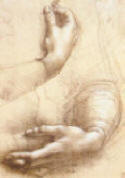BIO210 Weekly Guide #1
ANATOMICAL TERMS; BODY ORGANIZATION;
CYTOLOGY

After completing this laboratory you should be able to:
1) Identify and correctly sequence the levels of structural organization of the body from molecule to organism
2) Identify the organ systems of the body and describe the majopr functions of each organ system
3) Recognize and correctly use anatomical terms for planes of section, directions, regions, body cavities, and motions
at joints
4) Recognize the major cell organelles in conventional microscopic slides and electron micrographs and know the central functions of each organelle
Guide to Gross Anatomy Guide to Histology Guide to Physiology
Outline
I. Organizational Principles
A. Levels of organization
organelles-->cells & extracellular matrix-->tissues-->organs-->
organ systems-->organisms
B. Organ Systems {APL Fig 1.14}
integumentary, skeletal, muscular, nervous, circulatory (cardiovascular),
lymphatic (immune), respiratory, digestive, endocrine, urinary (excretory),
female reproductive, male reproductive
II. Anatomical Terms: {FAP Ch 1}
A. Anatomical Position {APL Fig 1.2}
B. Planes of Section: {APL Fig 1.12, 1.13}
median, sagittal, midsagittal, parasagittal
coronal, frontal
transverse, horizontal, cross
C. Directions: {APL Fig 1.3}
rostral/cranial, caudal
superior, inferior
dorsal, ventral
posterior, anterior
medial, lateral
nasal, temporal
umbilical, inguinal
proximal, distal
superficial, deep
D. Locations:
vertebral regions:
capital, cervical, thoracic, lumbar, sacral, caudal
other regions/landmarks: {APL Fig 1.4, 1.5}
cephalic, frontal, temporal, occipital, mental, orbital, nasal, buccal,
oral, otic, nuchal
cervical
thoracic, acromial, scapular, sternal, costochondral, mammary
axillary, brachial (arm), anticubital, antebrachial (forearm), carpal (wrist),
manual (hand), palmar, digital
abdominal, umbilical, lumbar, pelvic, inguinal, gluteal, pubic
femoral (thigh), patellar, popliteal, tibial (leg), crural, sural, pedal (foot),
tarsal (ankle), calcaneal, plantar, digital
E. Body Spaces: {APL Fig. 1.1, 1.6}
true body cavity - coelomic spaces (visceral and parietal layers of membrane):
pericardium
pleura
peritoneum
conventional body spaces/cavities/regions:
cranial cavity
vertebral/spinal cavity
thoracic cavity
mediastinum
abdominopelvic cavity {APL Fig. 1.7}
epigastric, umbilical, hypogastric, hypochondriac, lumbar, inguinal
OR left, right x upper, lower
F. Motions Across Joints:
extension, flexion, lateral flexion
elevation (levitation), depression
adduction, abduction, circumduction
rotation
pronation, supination
inversion, eversion
dorsiflexion, plantarflexion
III. Cytology {FAP Ch 3; APL Unit 4}
A. Structure and Function of Subcellular Organelles:
cytosol, cytoskeletal elements, plasma membrane, nucleus, nucleolus,
mitochondria, ribosomes, endoplasmic reticulum, Golgi apparatus,
vesicles, lysosomes, peroxisomes
B. Microscopy
light
conventional light
polarized light
confocal light
electron
transmission
scanning
Gross Anatomy List
There is no formal gross anatomy list for this week. See the terms listed below in the Guide to Gross Anatomy.
Guide to Gross Anatomy
Anatomical Terms
Familiarize yourself with the anatomical terms for body planes of section and directions listed in the lecture outline.
Work through all of Unit 1 in the Amerman text, 3rd Ed. (APL). Skip the fetal pig dissection part
of Exercise 1-4.
Practice the limb motions in the lecture outline. Try them on an articulated skeleton, a classmate, or your own body, until you are comfortable with exactly what each term means.
Guide to Histology
Cytology
It is assumed that the students in this course will have some basic knowledge of cells and their organelles from previous classes in biology. Many of these structures are seen best in electron microscopy, and thus will not be emphasized in this class. Some electron photomicrographs will be placed on demonstration this week. The web links listed below and on the web resources page have useful guides. A general knowledge of the cell, its parts, their functions, and their appearance, especially under the light microscope, is essential to get the most from this class.
Work through Unit 4 Prelab Exercises 4.1 - 4.4 in the Amerman (APL) text using the models and electron micrographs on demonstration. Figures 4.3 and 4.4 will help you with identification. Skip the sections on cell division (mitosis and meiosis). Diffusion will be covered as part of next week's lab.
Microscopy
This course also assumes an operating familiarity with compound light microscopes. If you are not comfortable with using light microscopes, please work through Unit 3 in the Amerman (APL) text, using both the Wolfe and Leica microscopes. A small box of "thread" and "e" slides have been put out for your use.
Locate the "Vertebrate Histology Collection" slide boxes on the side countertop. These are four identical sets which you are free to use to study for the histology part of the course. These sets need to stay in Room 101.
Guide to Physiology
There is no real physiological component to this week's lab. The physiological topic for this week is basic metabolism, which we will cover in the class sessions. If any of this material seemed unfamiliar, please review biomolecules, enzymes, energetics and metabolism in an introductory Biology or A&P text, using the PowerPoints on the Wesleyan course portal as a guide.
Additional Resources
JayDoc HistoWeb A fairly inclusive library of standard histological images. Some descriptive text is included, but labeling of structural features in the photomicrographs is minimal. The emphasis is on fairly low magnification images and defining structural features of each tissue. Very little useful information on cytology.
Loyola University Medical Education Network (LUMEN) A collection of excellent, mostly high-magnification histology images, including both light and electron micrographs. The emphasis is on comparative cytology. Sample lab practical exam questions (mostly identification) are included.
Michigan State Anatomy 562 Histology Study Guide A very easy to use histological set, organized for efficient review. Each slide is accompanied by a nice descriptive paragraph.
Southern Illinois University School of Medicine (SIU SOM) A complete, self-contained online histology text. Extensive descriptions of very good histological images. The amount of material here makes finding particular topics more difficult that at many other sites, but much more information is included surrounding each image. This site also includes histology methodology, histophysiology, and histopathology.
